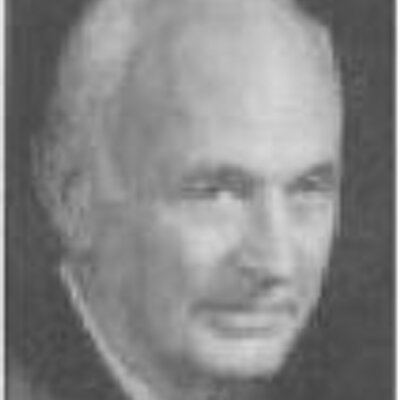Name Harry Klinefelter Died February 20, 1990 | ||
 | ||
Born March 20, 1912Baltimore, Maryland, USA ( 1912-03-20 ) Alma mater Johns Hopkins Medical SchoolUniversity of Virginia | ||
Harry Fitch Klinefelter, Jr. (; March 20, 1912 – February 20, 1990) was an American rheumatologist and endocrinologist. Klinefelter syndrome is named after him.
Contents

Biography
Klinefelter studied first at the University of Virginia, Charlottesville and then at Johns Hopkins School of Medicine. After his graduation in 1937 he continued his training in internal medicine at the Johns Hopkins Hospital. Klinefelter worked at the Massachusetts General Hospital in Boston from 1941-1942; under the supervision of Fuller Albright he described a group of nine men with "gynecomastia, aspermatogenesis without aleydigism, and increased excretion of follicle-stimulating hormone", the first description of what would be called the Klinefelter syndrome. Initially he suspected this to be endocrine disorder and postulated the presence of a second testicular hormone, but in 1959, Patricia A. Jacobs and Dr. J.A. Strong (Western General Hospital and University of Edinburg) demonstrated that a male patient with the phenotype of Klinefelter syndrome had an additional X chromosome (46 XXY). Klinefelter confirmed, later, that the cause was chromosomal, rather than hormonal.
Klinefelter served in the Armed Forces from 1943–46 and then returned to Johns Hopkins where he remained during his professional life. In 1966 he was named associate professor. He retired at the age of 76.
Comments on the Klinefelter syndrome
Klinefelter described his findings as follows:
I first worked under Dr. Howard Means, measuring oxygen consumption of adrenal gland slices in the Warburg apparatus, but I was so unsuccessful at it, breaking most of the apparatus, that in September, I asked Dr. Means if I might work with Dr. Fuller Albright, since I primarily wanted to learn some clinical endocrinology. Dr. Albright was the most outstanding clinical endocrinologist in the world, and Dr. Means readily agreed.
Albright's Saturday morning clinics were famous throughout the Massachusetts General Hospital. At the first one I attended, I saw a tall black boy named George Bland who had gynecomastia and very small testes (1.0–1.5 cm in length). When I asked Dr. Albright what this was all about, he said he did not know but that he would be happy for me to work on it. During the rest of the year, we found 8 other patients with this same condition and reported the series at the endocrine meetings in 1942. Dr. Albright was charitable enough to let me put my name first on the paper that was published later in 1942 in the Journal of Clinical Endocrinology. The title, “A Syndrome Characterized by Gynecomastia, Aspermatogenesis without Aleydigism, and Increased Excretion of Follicle-Stimulating Hormone,” was so long that the syndrome came to be known by my name, though it was really just another of Dr. Albright's diseases. Albright had more ideas in a day than most people have in a lifetime, and it was a great pleasure and privilege to work with him. Not only did he have great ideas and theories, but if someone came up with a fact that blasted his current theory, he soon had another one!
He described the patients:
These patients tend to be tall, with normal secondary sex characteristics; most have normal sexual function. ... these patients often have an entirely normal appearance save for their small testes, and I am sure many escape detection because the testes are often not examined in a general physical examination. (Several have) gynecomastia...
He also described that a testicular biopsy shows "the atrophy and hyalinization of the seminiferous tubules with preservation of the Leydig or interstitial cells."
Klinefelter comments on gynecomastia:
A few years after the syndrome was described, Heller and Nelson reported that the gynecomastia was not a necessary part of the syndrome, though it occurred in about 75% of the patients. The hallmarks of the syndrome, therefore, are small testes, sterility, and increased excretion of follicle-stimulating hormone.
On the later discovery of the extra X chromosome:
Fourteen years after the original description of the syndrome, 2 groups independently discovered that the buccal mucosal cells of these patients contained an extra chromatin mass, or were chromatin positive. A few years later, Jacobs and Strong found that these chromatin-positive patients had 47 chromosomes, with an extra X chromosome, and were XXY. The extra X chromosome results from either meiotic nondisjunction, in which a chromosome pair fails to separate during meiosis, or from anaphase lag. Anaphase lag might result in a gamete losing a sex chromosome; a chromosome lags and is not incorporated in the new cell in the next stage of mitosis (anaphase). Such anaphase lag could account for the largest minority of karyotypes, the mosaics XY/XXY and XX/XXY. Eighty percent of these patients have positive sex chromatin, and their karyotypes may vary widely, and with many mosaics.
The syndrome in patients with positive chromatin in the buccal mucosa should probably be called Klinefelter's disease. Although these patients have positive female sex chromatin, they are phenotypic males and should never be considered otherwise. The other 20%, whose testes are not small, have XY chromosomes and should be studied further to determine etiology. These patients often have no complaints, and the condition is discovered in the course of a general physical examination. Sterility and gynecomastia are the most common complaints. It is thought that 5% to 10% of sterile males have this condition. When this disorder is suspected, a buccal smear is the first test to request. If the cells are chromatin positive, the diagnosis is made; testicular biopsy and karyotyping are not necessary. If the buccal mucosa is chromatin negative, further studies are indicated.
The extra X chromosome in these men has stimulated much interest, but its function, if any, has not been determined. Systemic lupus erythematosus, a disorder more common in female patients, has been frequently reported in this syndrome, but the association is not statistically significant. The association with leukemia may also be coincidental. Leg ulcers, osteoporosis, and taurodontism occur with greater frequency in these patients than in control subjects, and dermatoglyphic studies have shown characteristic abnormalities.
